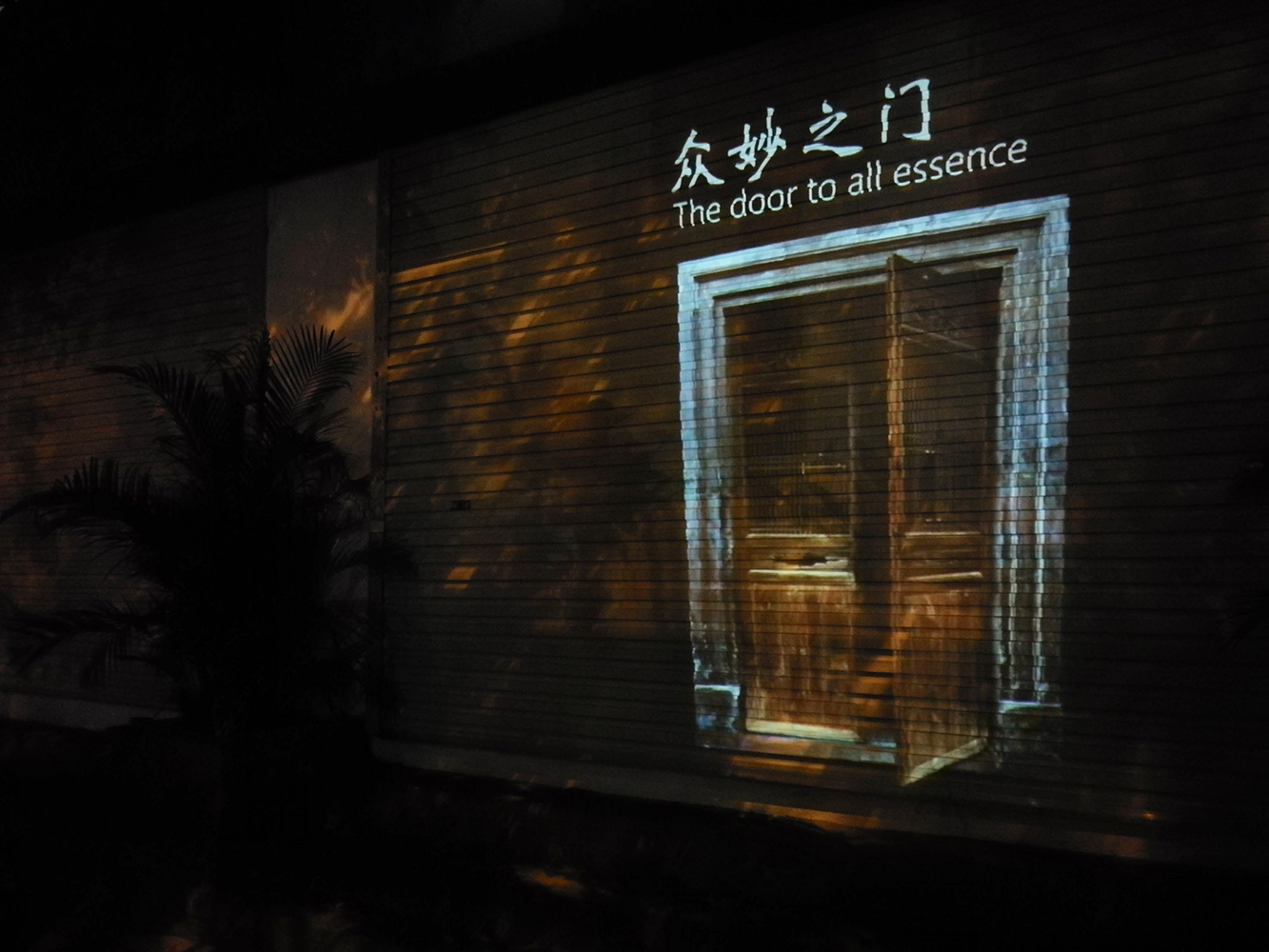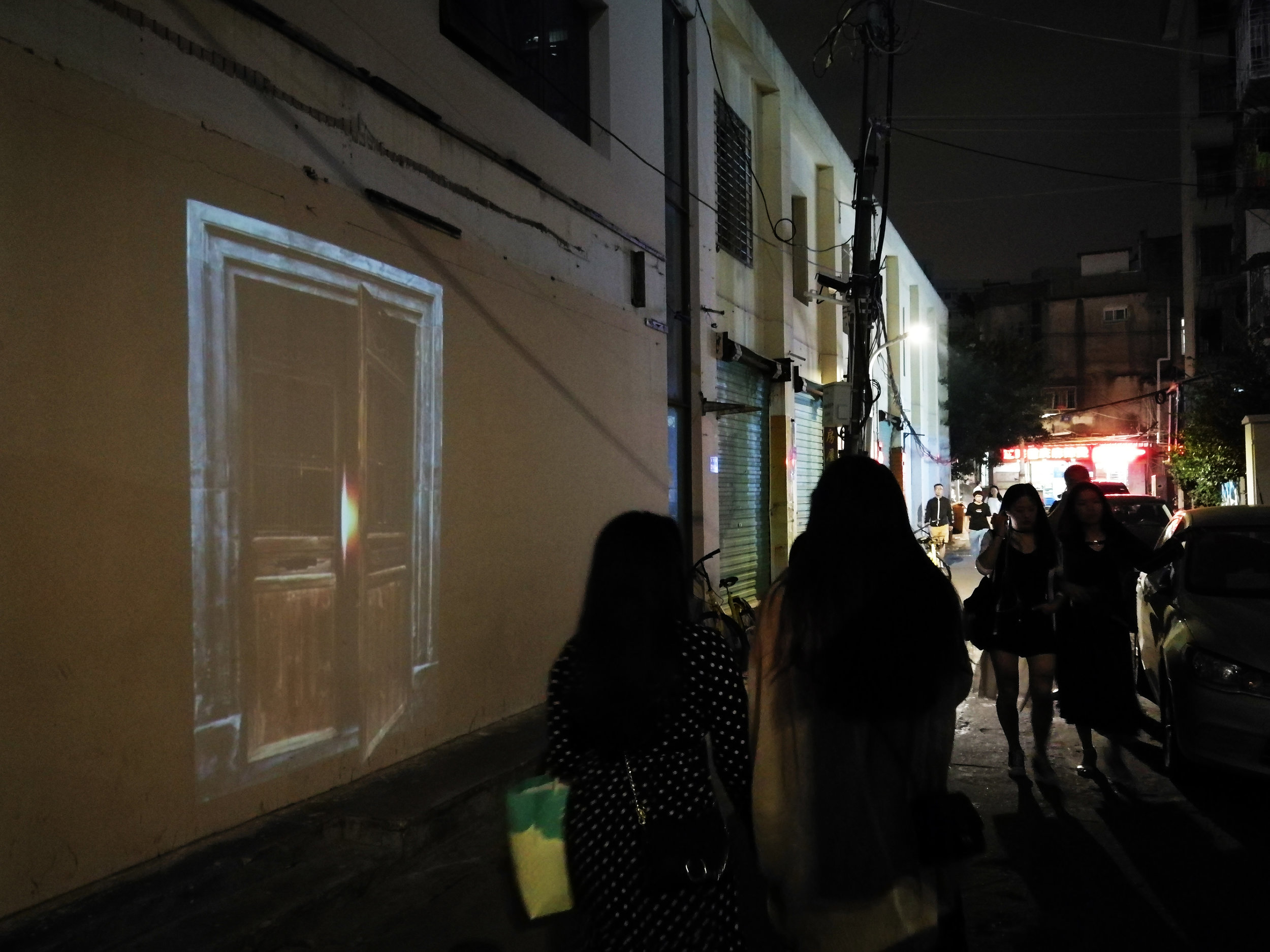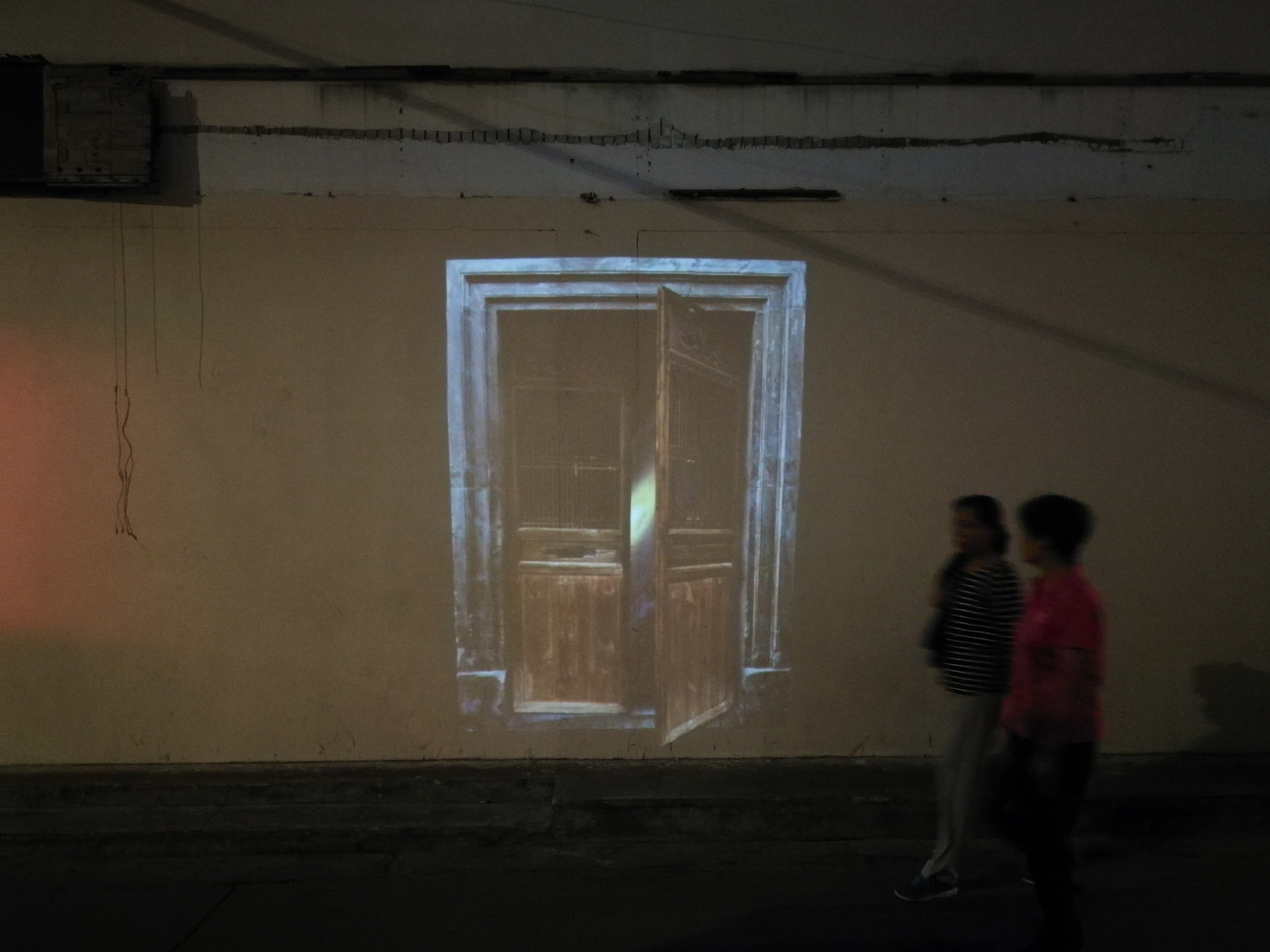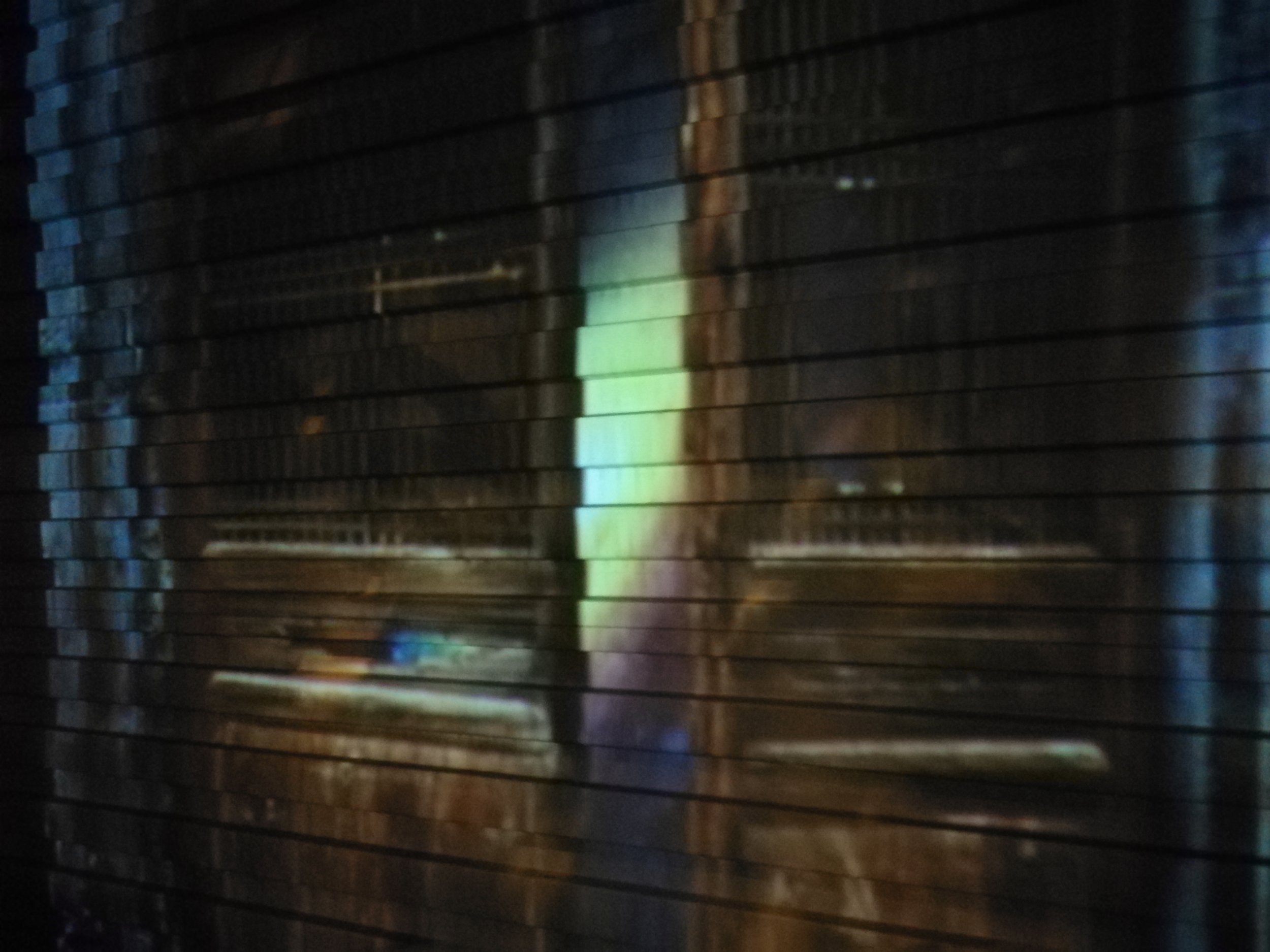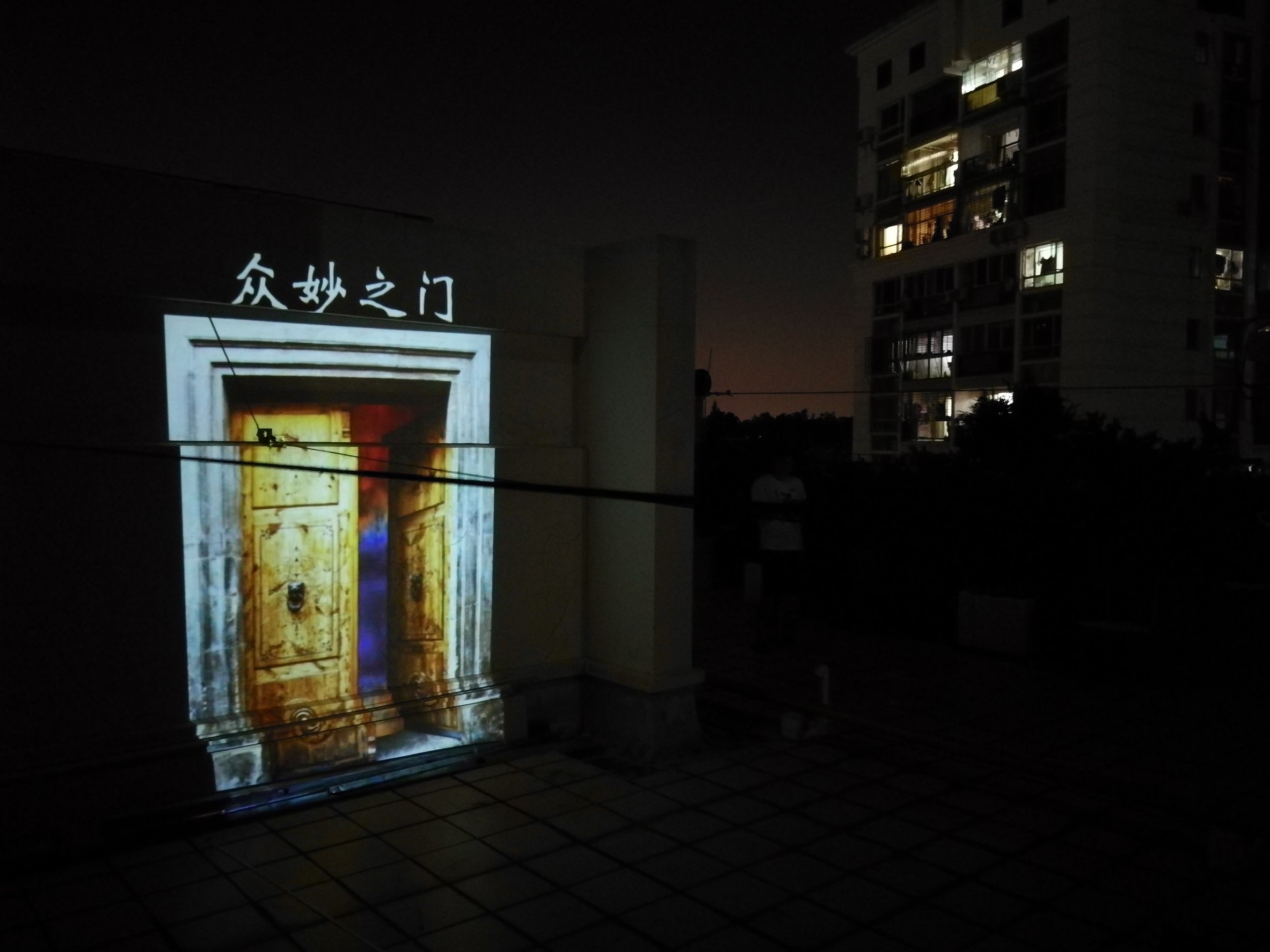The creative response to this chapter is Straw Dog - an effigy of the ceremonial straw dogs referenced in the verse that would be revered for the duration of a traditional ceremony and then discarded.
Verse 4 - It blunts its own sharpness
The fourth verse describes the Dao as the “fathomless” and enduring natural processes that with time cause all objects to disintegrate. Stefan Stenudd (on Taoistic.com) writes:
“We should ponder this, so that we remember to pay the most attention to the things that seem to be the least significant. The most enduring powers in the world are those that stand out the least. Sharpness does not last, nor does the tightness of a knot, or the brightest light. There is nothing that remains longer than its own dust. So, if we become like dust, we will prevail – and we will be in unison with Tao.”
My initial thoughts for a creative response to this verse was to work with some examples of the phenomena described in the verse, such as the erosion of rock by river water, or the decomposition of biological matter. But on reading more about one of the characters used in original text, I wanted instead to create a large cutout of the character, which could then be temporary installed in a landscape and photographed.
The character that caught my interest, 渊 (yuān), is a pictogram—a Chinese character originally derived from a picture—with a double meaning. The two long strokes on the left and right sides represent embankments, with the central component resembling water. The character means ‘deep pond’, as well as ‘deep’ and ‘profound’ .
I felt as though the use of this character in the verse worked well to describe the Dao as ‘that which precedes the Creator’ (Yi Wu); ‘what existed before the beginning’ (Ned Ludd); ‘the forefather of the gods’ (Gia-fu Feng and J English).
At the time I was working on the cut-out of the character there had been lots of heavy rain, resulting in the round basin in my local park in Manchester filling up with water. The water had been sitting there for days, and decaying plant matter and algae had started to create a rotten odour. I decided that this setting, an apparent deep pool would be good place to install the character, not least because we’re reminded by verse four that all things—the water, the park, the smell and the reaction I had to the smell—are fleeting.
第四章:挫其锐
在第四章,道被形容为“万物之宗”,是天长地久的自然规律,且能让一切物体分解、解体的规律。斯特凡·斯特努德Stefan Stenudd(在Taoistic.com)有写:
“我们应该思考这个问题,这样我们会记得把最多的注意力放在仿佛最不重要的东西上。世界上最持久的权威是最不出众的权威。尖锐不持久,结子的紧度、最亮的灯同样不持久。没有任何东西能比它灰留存更久。因而,如果我们成为灰尘,我们会取得胜利,我们会跟道同步。”
“We should ponder this, so that we remember to pay the most attention to the things that seem to be the least significant. The most enduring powers in the world are those that stand out the least. Sharpness does not last, nor does the tightness of a knot, or the brightest light. There is nothing that remains longer than its own dust. So, if we become like dust, we will prevail – and we will be in unison with Tao.”
我最早对第四章的创作想法是探索章节中提到的几个自然现象,比如河水侵蚀石头或生物分解等现象。但在我研究原文的时候,有一个字我觉得特别有意思,从而使我下决定制作一个很大的汉字,安装在场景里拍摄。
这个字——“渊”,是象形字:
“在甲骨文和金文中左右有表示水岸的丿丨,中间是像水的样子,合起来像一个中间有水洄流的深潭。渊本意指回旋的水,引申指深潭、深水,又引申指深、深厚。”
我觉得这个渊字跟第四章最后的两句非常合适:“吾不知谁之子,象帝之先。”
在我制作这个渊字的时候连续下了几天的大雨,因此家里附近的公园的圆盆充满了水。数天不流动的水,因为有生物和藻类,所以有了一个恶心的臭味。我决定这个地方很适合安装我的渊字。它不仅像一个“渊”(深池沼),而且第四章提醒我们所有的东西——那个水、公园、臭味和我对臭味的反应,都稍纵即逝。
Verse 3 - Weaken the Ambition, Strengthen the Bones
Individual suffering, resulting from desire and comparison, as well as societal ills such as theft, both find remedy in verse three of the Dao De Jing.
The Master leads by emptying people's minds and filling their cores, by weakening their ambition and toughening their resolve.
Tr: Stephen Mitchell
Stephen Mitchell’s translation of 圣人 as ‘master’ feels a little lofty, and the often-used direct translation of ‘sage’ is a little dated, which is one of the reasons I liked Brian Browne Walker’s translation, where ‘wise person’ points to a trait attainable by all. At a time in Chinese history when Confucianism provided moral “cures for civilization” through strict rules governing social interaction, the Dao De Jing didn’t oppose a top-down doctrine, but rather presented individuals with pointers to help them recognize their own connection with the universe. This individualist approach is one of the reasons the text is so accessible to us today. Its teachings fit with the ideas we have around creating our own reality - the idea of each person’s reality being constructed within the bounds of their consciousness.
When exotic goods are traded and treasured, the compulsion to steal is felt.
Tr: Brian Browne Walker
Seen through the lens of current materialism, its clear that highly-prized goods and comparison with others do cause emotional, spiritual and financial suffering. And the advice given in verse three - to practice detachment - seems sound. Becoming aware of our desires and watching our thoughts, means that we will be better placed to practice non-action and curb the manipulation we endure from dopamine-loop-driven systems.
My response to verse three was to create a series of manipulated digital photographs with particular sections - products, adverts or objects of desire - censored using pixelation. Some of the images feature expensive products such as cars, which are over-priced in China and highly-prized, and often considered as prerequisite items when proposing marriage. But I found it interesting that other pixelated material, such as the toys and nick-knacks on display at a children’s flea market, also trigger in us that response to buy, consume, posses.
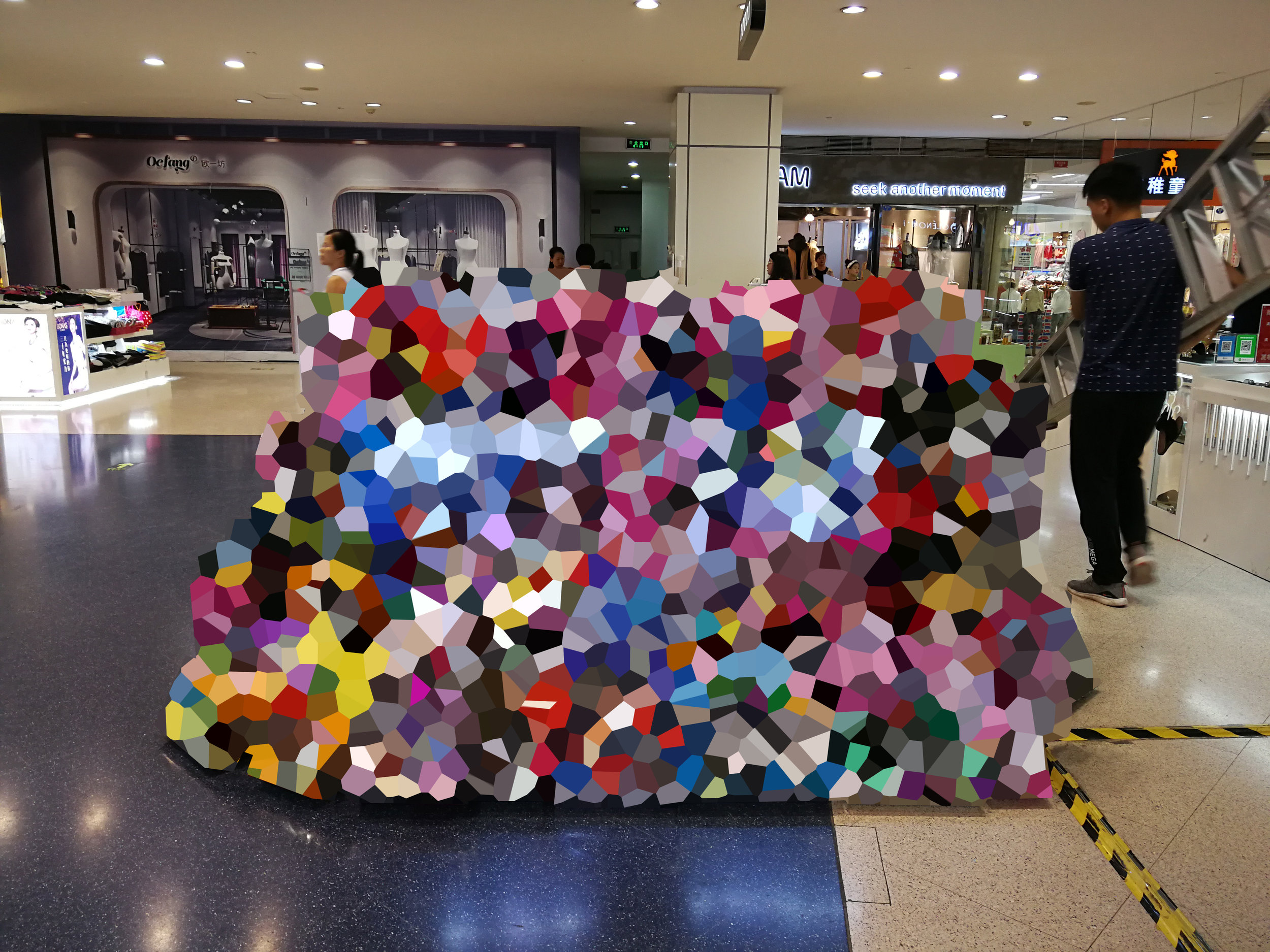
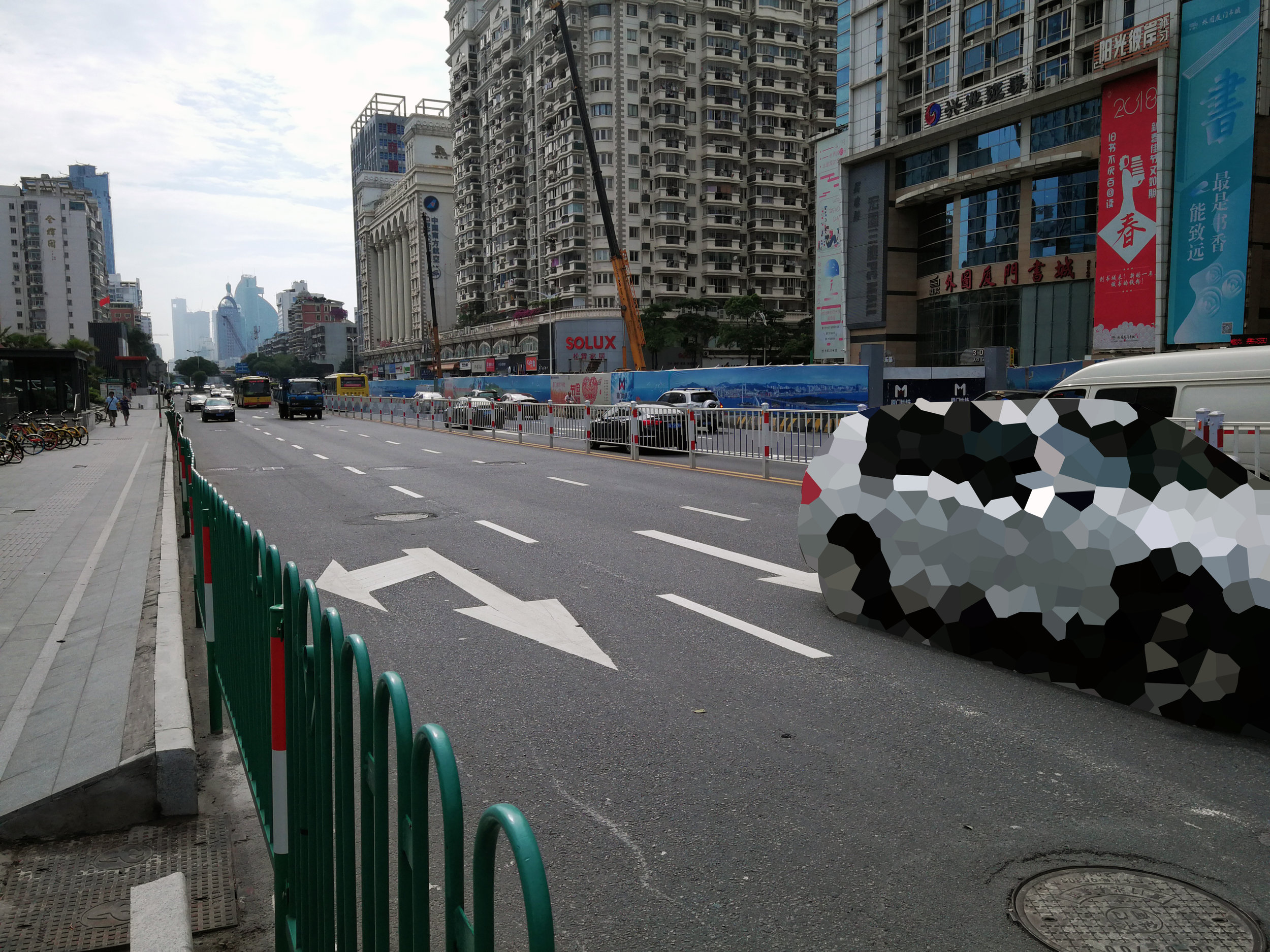
I also really enjoyed the action of pixelating the objects, the process of censorship. The resulting images are a collection of very everyday photos, at once colourful, but unsympathetic in the information they reveal. And its interesting to note that the desire we have as a species to consume, is in many ways very similar to the desire we have to know, to want to understand, to need to get all of the information.
It's the compulsive need to answer unanswerable questions that is, in Taoist philosophy, the mind's great dysfunction.
Damien Walter
And so the images i’ve presented here can be used as tools for your own practice of detachment and the ‘conquering of your own cunning.’
第三章——弱其志,强其骨
由欲望和相比而造成的个人痛苦,以及社会的窃盗问题都在《道德经》第三章得到解决的办法。
是以圣人之治,虚其心,实其腹, 弱其志,强其骨
翻译家斯蒂芬·米切尔(Stephen Mitchell)把此章节的“圣人”翻译为“master”,给现在英语读者一种过于高远的感觉,而另外比较普遍的翻译“sage”则挺老式,因此我蛮喜欢布赖恩·布朗·沃克(Brian Browne Walker)的翻译方式,他把“圣人”翻译成“wise person”(智者),指出所了有人可以习得的一个特质。在孔子思想派推出严格的社会法规时,《道德经》则没采用自上而下的层级规定,而给了大家比较客观的启示,让读者意识到个人跟宇宙的奥妙关系。
不贵难得之货,使民不为盗
通过现代唯物主义可以很明显的看到,高价物品和跟其他人做攀比确实导致感性、灵性和财务的苦难。第三章的建议——实行“无欲”,听起来很有道理。我们越发觉自己的欲望、观察我们的思维,我们越能够实行无为,且更好地约束现代的多巴胺环从动系统(dopamine-loop-driven systems)。
我对第三章的感应作品是一系列的电子照片,每张有一部分内容(产品、广告或其他欲望的对象)用马赛克的方式被删减。有的照片有展示昂贵的产品,比如汽车(在中国汽车定价过高,因此汽车通常作为求婚的前提条件之一)。但在做这些作品的过程当中,我觉得很有意思是,其他被马赛克掉的内容,比如小孩子跳蚤市场摊子上的玩具和杂物跟车子一样会触发我们想要买、消费、拥有的生物反应。
给图片马赛克化的过程也很有意思。博客上的照片是一系列很日常的图片,丰富多彩但又对于它们传播的信息表示淡漠。我觉得我们想要消费、拥有的欲望本身很像我们想要获得新知识、彻底了解某个问题的欲望。
“在道家哲学中,强迫性地需要回答无法回答的问题是大脑的巨大失调。”
达米安·沃尔特(Damien Walter)
我这里展示的图片可以当做自己实践“无欲”的工具。
Verse 2 – Recognise Beauty and Ugliness is Born
When the world speaks of beauty as being beautiful, ugliness is at once defined.
(Walter Gorn Old)
Here we learn that everything is relative – that there are no absolutes. It’s only in describing something as easy that the idea of difficult is created. And we’re told that by recognising this fact, and moving away from our subjective viewpoints, we’re able to employ ‘Non-action’ - the Daoist concept of ‘action without action’ or ‘effortless doing’.
Non-action (wu-wei 无为 in Chinese) is often erroneously understood as passivity. However, its better understood as taking just the right action at just the right time. Stephen Mitchell writes:
A good athlete can enter a state of body-awareness in which the right stroke or the right movement happens by itself, effortlessly, without any interference of the conscious will. This is a paradigm for non-action: the purest and most effective form of action. The game plays the game; the poem writes the poem; we can't tell the dancer from the dance.
Through non-action, we allow things run their course, trusting in the natural processes that govern all things; and thereby moving closer to serenity and ultimately yielding the benefits our striving minds would have had us take miscalculated action to try and achieve.
I was inspired to create this piece in response to verse two when I came across an abandoned painting that had ended up in my apartment building’s waste area. It reminded me immediately of a different translation of the opening lines, which reads:
When all the world recognizes beauty as beauty, this in itself is ugliness.
(John C. H. Wu)
In this reading of the ancient characters, a universal aesthetic standard is condemned, and beauty can be defined not by a common ugliness, but by a myriad of other individual definitions of beauty.
I decided to take action by hanging the painting on the wall of the dump where it was found. In doing so I like to think I’ve subtly re-evaluated its and the dump’s beauty, in some way.
第二章 - 斯恶已
通过第二章,我们能意识到世界上没有绝对、只有相对。人们把某事形容为“容易”的时候,则“难”的概念被产生。此章节告诉我们:意识到这个事实,能够让我们脱出主观的观点,并采取“无为”的行为面对世事。“无为”是道教思想的重要理念,它提倡顺其自然、相信自然规律。
有时候,人们把“无为”误解为一个过分被动、懦弱、不能采取任何行为的概念。但它更加是指随时能够采取最合适的行为来面对事情的一种意识的状态。翻译家史蒂芬·米切尔(Stephen Mitchell)形容“无为”如下:
一位好的运动员可以进入一个每个动作会自动、毫不费力、无需自觉的运动的身体意识状态。这是无为的范式;是最纯粹、最有效的行为。游戏本身玩游戏、诗歌本身写诗歌、我们无法区别舞蹈和舞者。
通过“无为”的状态,我们让事情顺其自然,相信自然的永恒规律,从而更靠近宁静,最后获得我们平时一直在争锋的脑子会使用错误地行为试着得到。
我这次的作品灵感源自于在我的小区的垃圾区里发现的一幅画。看见它,我立即想起第二章开头的另外一个英文翻译:
When all the world recognizes beauty as beauty, this in itself is ugliness.
(当全世界认识美为美,这本身就是恶。)
译:John C. H. Wu
在这个不同的理解中,一个普及的美观标准被声讨。这个理解认为美的定义不是因为恶的定义,而是从不同的个人美的定义。
发现这幅画后,我决定行动。我把它在垃圾区的墙壁上挂起来,于是微妙地重评定了它的美丽和价值。
Verse 1 - The Door to All Essence
第一章 - 众妙之门 中文在下面
The first two verses of the Dao De Jing have been described as an introduction to the text as a whole, and there are a lot of ideas presented in this first verse.
Immediately, a key concept in Daoist thought is put forth – the disconnect between the universe itself and the words we use to describe it.
The Tao that can be stated is not the Eternal Tao. The name that can be named
is not the Eternal Name.(Henry Wei)
Dao is described as the mother of all things, an eternal force that existed before the creation of the universe.
Another common theme is also put forth - the necessity to rid oneself of desire if one is to observe the wonders of the universe.
But I took the starting point for this first work from the last line. I loved the imagery of ‘[a] door to all essence’ (John C.H. Wu); ‘[a] gate of all mystery’ (Gong, Tienzen); ‘[a] gateway to all understanding’ (Kiyoashi).
It alludes to the grandness and incomprehensibility of the forces that created the universe. And I thought it would be interesting to play with our human desire to open that door, and another lesson in the first verse which states: ‘rid yourself of desires in order to observe its secrets’ (D. C. Lau).
And so for this first work I created a video intervention where animations of the universe are partly visible through a projected half-opened door. Deep booming voices can be heard reading the first full verse in Chinese and English over a humming, other-worldly soundtrack.
Video 视频
第一章 - 众妙之门
有研究家认为《道德经》的第一和第二章作为整个作品的前言,而第一章的确提出不少的理念。首先,道教思想的关键概念被提及,即宇宙与人们所使用形容它的语词的差异。
道可道,非常道
道被形容为“天地之始”和“万物之母”;一个具有恒久性、能够产生一切的神秘力量。
道教思想的另外一个理念也在此被提到:人们需要摆脱欲望才可以观赏世界的奥妙。
不过我从第一章的最后一行取得了我第一个作品的启发点。我非常喜欢“玄之又玄,众妙之门”这说法引起的意象。我觉得它意味着宇宙的无穷无尽,也暗指人类其实没法完全理解宇宙的来源。
“众妙之门”让我想把“门户”的象征作为这个作品的一个视觉题材。人类总是想要“打开门”、理解问题,但是第一张也警告了我们欲望的陷阱。
第一章的感应作品是一个视频装置作品。一个古旧的木门被投影到街上的墙壁上,门扇开了一点,便透露里面的宇宙的动态图形。在一个呜呜的、空想的背景音乐中,深沉的声音用中英两门语言念道第一章的全文。
此作品在厦门的不同公共场合中安装展示过。
Welcome to Works on the Way
Works on the Way is a new project and blog that will see me produce creative responses to individual verses of the ancient book of Chinese mysticism and one of the primary texts on Daoist thought, the Dao De Jing.
What is the Dao De Jing?
One of the most profound works that has issued from the mind of man.
Paul K. T. Sih.
The Dao De Jing is an ancient Chinese text commonly split into 81 short verses (also referred to as chapters or poems), in which wisdom on the nature of our world is presented. Themes explored throughout the text include virtue; non-action (wu wei); moderation; leadership and self-awareness.
The work is usually attributed to the Daoist thinker Laozi, who was probably a contemporary of Confucius; however, evidence as to Laozi’s existence is scarce, and the Dao De Jing may have in fact been authored by numerous hermits, mystics and dissidents in ancient China. Being written in classical Chinese, the original text is void of punctuation, it includes archaic characters, and was written in a time when other philosophical texts were widely read, and so may contain references to ancient cultural memes that are lost on the modern reader.
These elements, added to the fact that the authors employed a number of poetic devices, such as double meanings and puns; seem to encourage contradictory interpretations. Indeed, the Dao De Jing has been translated into Western languages over 250 times, each time differently and each translation falling short of the original. (You can read 76 versions of the first verse here.)
In spite, or perhaps because, of these characteristics, the Dao De Jing has been enjoyed by readers for thousands of years and has been called “ancient China’s great contribution to the literature of philosophy, religion, and mysticism”.
Why are you making this blog?
I have wanted to make work inspired by the Dao De Jing since I discovered the book whilst living in Chengdu, Sichuan, China in 2013 and found its content fascinating. It’s only now, having the time to devote to my personal art practice, that I’m able to approach the project with the time and resources it requires.
In presenting the project through the format of the blog, I hope to achieve a number of things. First and foremost, I hope that taking the time to research the Dao De Jing verse-by-verse will help me gain a deeper understanding of it and its ideas. Furthermore, I want to use the structure and rhythm of this project to test ideas as they come and develop my creative process, as well as my skills in different media. Additionally, in writing the blog in both English and Chinese I’ll be able to develop my Chinese vocabulary and writing style. And finally I hope that by making my work public through this blog, as well as presenting work in physical locations where possible, I’ll be able to share my creative practice with a wider audience in China and internationally.
My starting point for each work is going to be the original verse in Chinese. As these are written in classical Chinese, I’ll also be relying on modern Chinese interpretations to understand the text and gain insight. Once I feel I have a good grasp of the ideas in the verse, I’ll be creating an artistic response or ‘work’. I’ll then look to find an English translation that I feel does the original best justice, or one which best translates the ideas that I have taken as my inspiration for the work. Throughout the blog, translations from the text will be followed by the translator’s name in brackets.
Each post will include my response in the form of a work; a simplified Chinese version of the verse; an English translation; and a written explanation of the work and my thinking in English and Chinese.
Notes on the Title
As a Mandarin speaker, I’ve decided to use the pinyin version of the Chinese title of the book throughout this blog - Dao De Jing. The book’s title is also commonly translated as Tao Teh Ching/Tao Te Ching in the Wade-Giles Romanization of the language, and the title in simplified Chinese Characters is 道德经, which translate individually as:
道 Dao*/Tao**, path, road; method, way
德 ethics, morality, virtue
经 classic works
*The authors of the Dao De Jing believed that they had found that that had existed before heaven and earth, an eternal force that governs all in nature and beyond. In in order to write about this thing they had to choose a character to represent it. They decided on the character 道, which at the time was also used by Confucius and other thinkers to mean ‘the way [to do something]’. But Daoism’s Dao is more like ‘the eternal way’.
**The terms Dao and Tao seem to be used interchangeably and point to the same thing. I will be using Dao throughout this blog, however I will retain uses of Tao when presenting quotes or translations that have used it.
It’s from the translation of 道 as ‘the way’ that the title for this blog is derived.
I hope you’ll enjoy the rest of the blog. Feel free to leave comments and please share the blog with your friends if you think they’ll find it of interest.
欢迎参观《道的经》(Works on the Way)
Works on the Way是一个新的艺术项目。在此博客上,我会对《道德经》的篇章分别做出艺术感应。
《道德经》是什么?
“人类致辞过最深刻的著作之一。”
Paul K. T. Sih.
《道德经》是古代中国的哲学经典之作,即道教思想的主要道藏之一。在现代,它被后人分成八十一篇章。《道德经》的主题包括‘道’、美德、无为、修身、领导、节制等。虽然短,作者Brian Browne Walker认为《道德经》具有“对每个生活问题的答案、每个困境的解决办法、每种伤口的药膏。”
虽然人们普遍认为《道德经》的作者是老子,但能够证明老子真实存在的证据却非常少。很大一种可能是《道德经》由当时居住在山里的圣人或隐士参悟并编写的道理。当时,为了改善社会的问题孔子思想派提倡过多严格的社会法规。但《道德经》则试着从一个个人角度来创造人们对世界的联系和尊重。
《道德经》涵义深奥、理念难以掌握,原文是完全不使用标点符号进行句意区分与停顿的古文。我们今天读的每篇章的标点符号都是由近现代的历史学家们通过客观理解与分析后加进去的。并且,《道德经》与产生它的社会和文化关系密切;因此,部分现代人比较难完全理解《道德经》的层层含义。
此外,《道德经》还利用具有矛盾性的写作手段,似乎以便读者有不同的诠释。这些特征给国外的读者和翻译者带来一定的困难。《道德经》被翻译成西方语言两百五十来次,可是每个译文都得不到原文的精粹。(Taoistic.com有收集了第一章的七十六个英文翻译。)尽管,或许因为这些特征,上千年以来《道德经》收到大数量读者的欣赏,也被认可为“古代中国给哲学、宗教和神秘主义文学的伟大贡献。”
你为什么要做这个项目?
自从2013年住在四川成都的我发现《道德经》时,我一直很想做一个灵感来自于其书的项目。我一接触这本书我就感觉特别神奇。但我现在才有比较多的时间和资源能够致力于这个计划。
我希望我可以通过发布博客的形式来得到几个目标。首先,我相信我一章一章地研究《道德经》,我能够从它的理念和道理获取较深层的理解。其次,我想随着项目的节奏和结构试行新的想法和作品,同时提高我不同媒体和艺术过程的技能。另外,使用英中两门语言写博客,会有助于我中文词汇和写作能力。最后,我希望通过发布博客、和在实体位置展示作品,能够跟越来越多国内外的观众分享我的个人艺术生涯。
每个作品的启发点为《道德经》的原文,但因为原文使用着古文,我还需要依靠现代汉语的解释来取得理解。掌握了篇章的主意并完成了感应作品后,我会寻找最合适的英文翻译来给英文读者参考。在博客中,翻译者的名字会备注在英文翻译后的括号里。
每发布的博客会包括我的感应作品、《道德经》原文(简体)以及我对其作品的思路和解释。
题目的备注
作为一个汉语学习者,我决定在此博客中,使用《道德经》的汉语拼音写法Dao De Jing。该书的名称用威妥玛式拼音法为Tao Teh Ching或Tao Te Ching。本项目的名称是Works on the Way,是可以翻译成“关于道的作品”。
我非常希望你会欣赏接下来的博客内容。欢迎在博客上留言以及分享给朋友!















